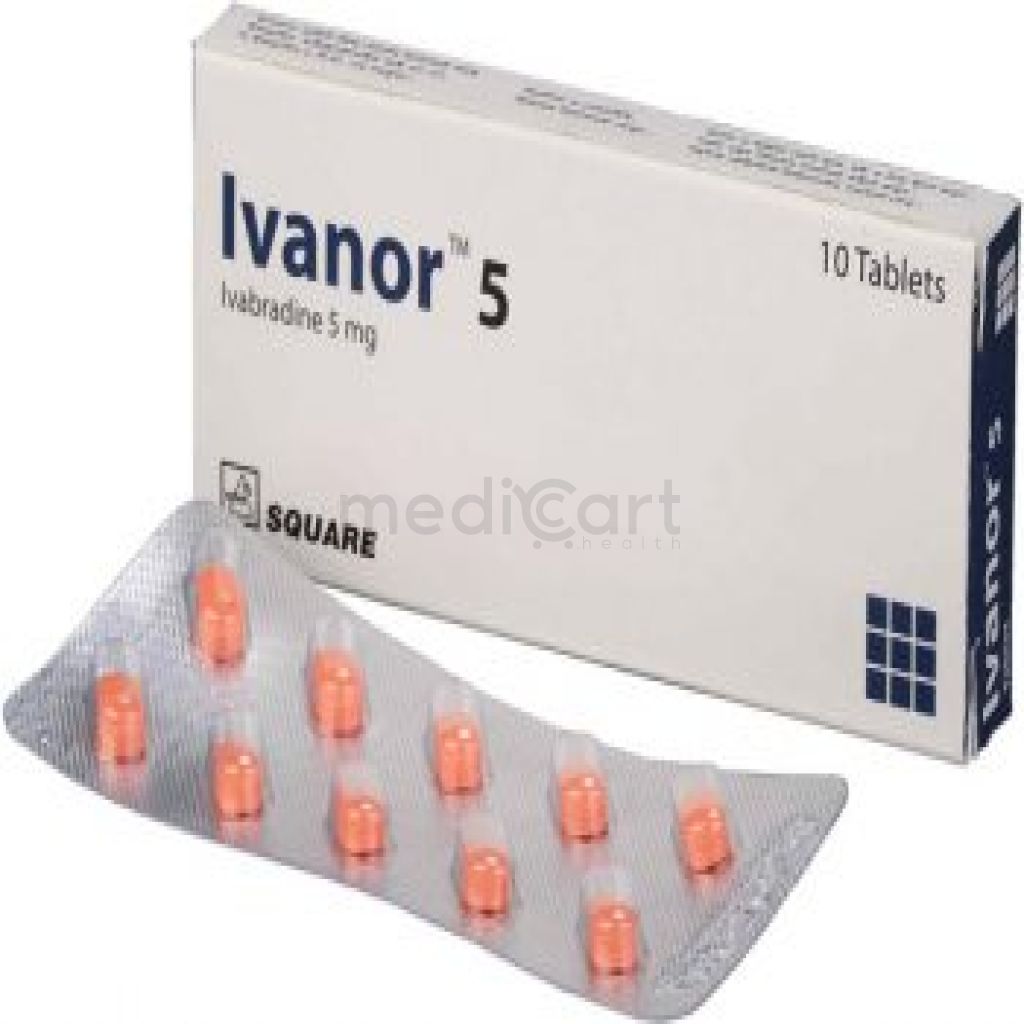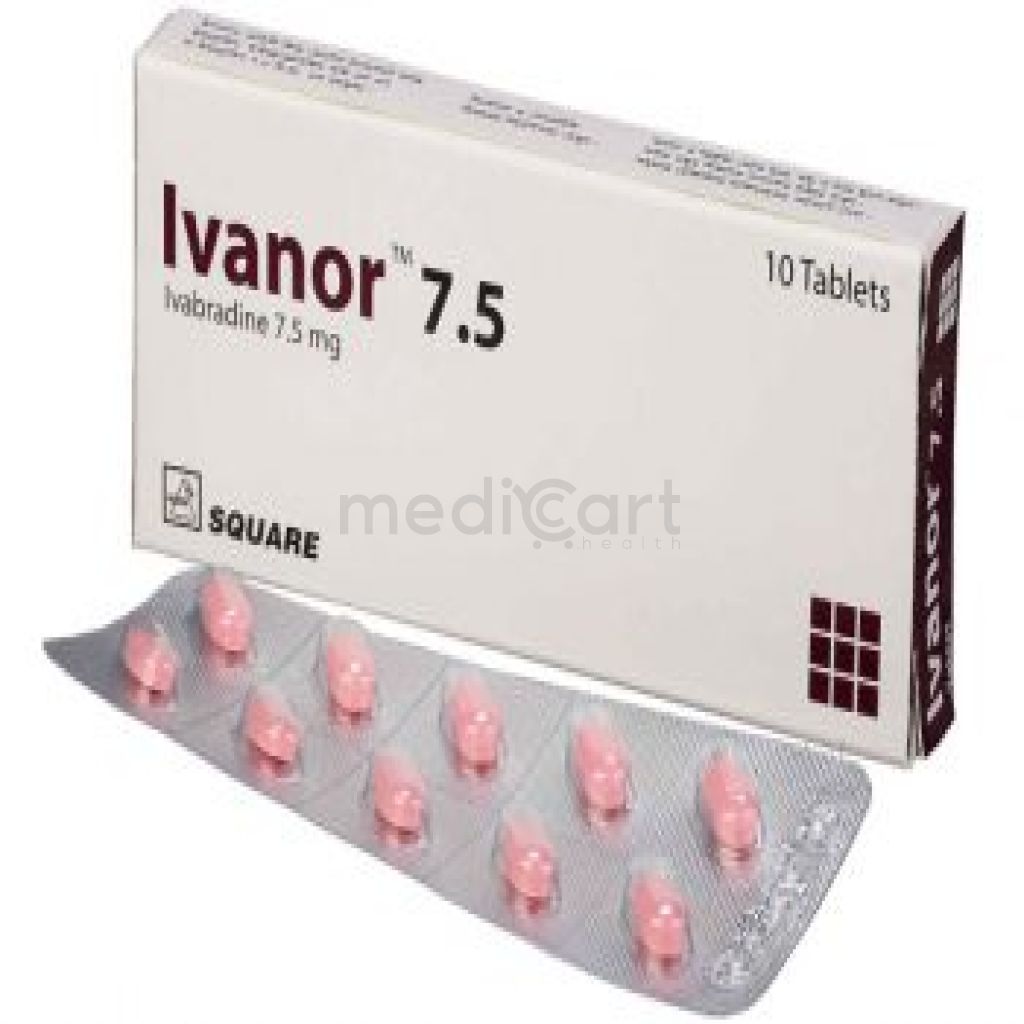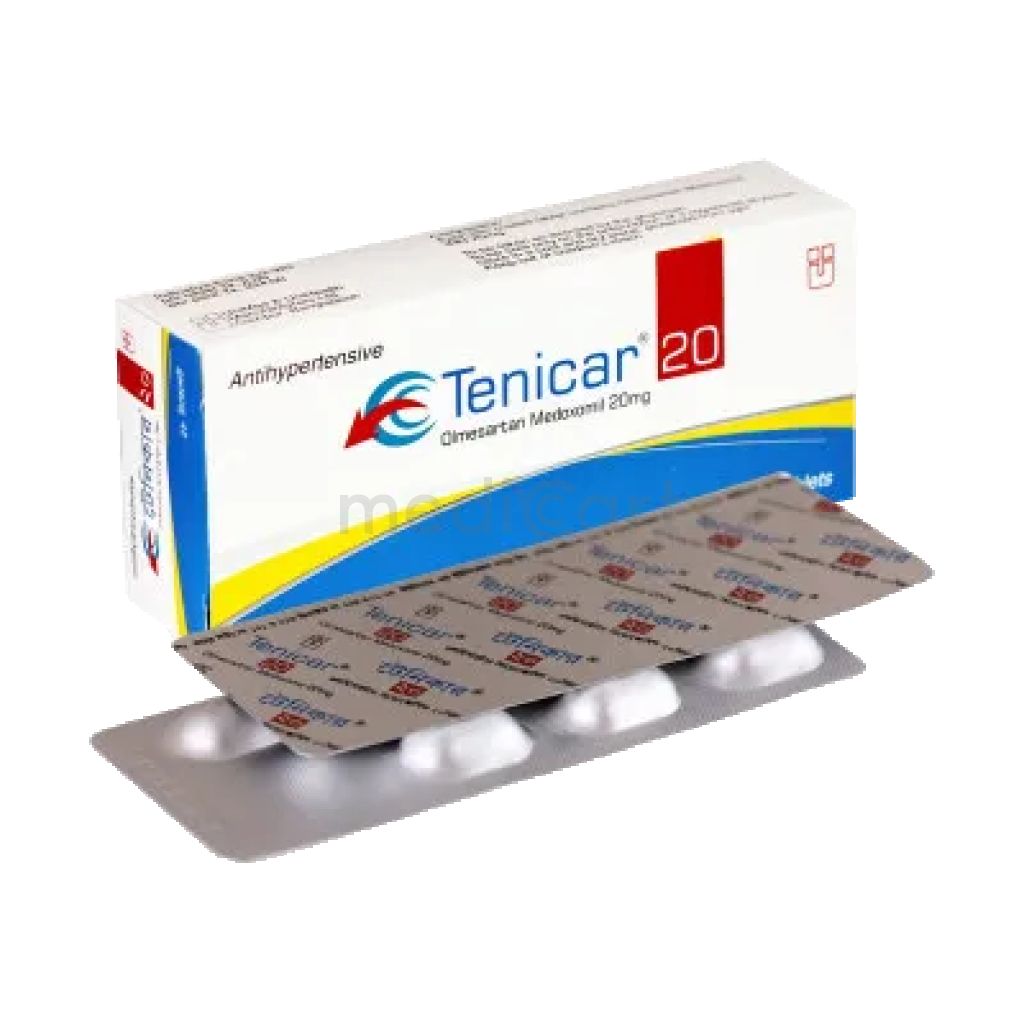

Ivaprex - 5mg
Tablet
Pack Size :
10 Tablet x 1 Strip
Generics :
Ivabradine
Manufacturer :
Incepta Pharmaceuticals Ltd.
Best Price *
TK
200.00
* Delivery will be done in Dhaka city only.
Alternative Product
More Information About - Ivaprex - 5mg
Description
Generic Name
IvabradinePrecaution
Reduce dose if resting heart rate is persistently <50 beats/min or patient develops bradycardia symptoms during treatment; discontinue if heart rate <50 beats/min and symptoms persist. Not recommended in patient with AF or other cardiac arrhythmias that interfere with sinus node rhythm; monitor regularly for AF occurrence. Not recommended for concomitant use with heart rate reducing calcium channel blockers (e.g. diltiazem or verapamil), immediate use after a stroke or in patients with 2nd degree AV-block. Severe renal insufficiency, Moderate hepatic insufficiency. Stop treatment if visual field deteriorates unexpectedly. Patients with retinitis pigmentosa.Indication
Chronic stable angina, Heart FailureContra Indication
Pregnancy, lactation, resting heart rate <60 beats/min prior to treatment, cardiogenic shock, acute myocardial infarction, severe hypotension (<90/50 mmHg), severe hepatic insufficiency, sick sinus syndrome, sino-atrial block, heart failure patients with NYHA class III-IV, pacemaker dependent, unstable angina, 3rd degree AV-block, concurrent use with potent CYP3A4 inhibitors.Dose
N/ASide Effect
1-10% Bradycardia (10%) Hypertension or increased blood pressure (8.9%) Atrial fibrillation (8.3%) Luminous phenomena (phosphenes) or visual brightness (2.8%)Pregnancy Category
Name : Not Classified
Description
FDA has not yet classified the drug into a specified pregnancy category.Mode of Action
Ivabradine is a heart rate lowering agent that works through selective and specific inhibition of the cardiac pacemaker If current. If current controls the spontaneous diastolic depolarisation in the sinus node and regulate heart rate.Interaction
Concomitant use with QT-prolonging drugs (e.g. quinidine, disopyramide, bepridil, sotalol, ibutilide, amiodarone, pimozide, ziprasidone, sertinole, mefloquine, halofantrine, pentamide, cisapride, erythromycin IV) is not recommended as QT prolongation may be enhanced by heart rate reduction. Concentrations may increase when used with CYP3A4 inhibitors. Use with verapamil or diltiazem (moderate CYP3A4 inhibitors) is not recommended. If used with other moderate CYP3A4 inhibitors (e.g. fluconazole), may consider starting at lower dose and with heart rate monitoring if resting heart rate >60 beats/min. Concentration may be reduced with CYP3A4 inducers (e.g. rifampicin, barbiturates, phenytoin, St John's Wort) and may require Ivabradine dose adjustment. Potentially Fatal: Concurrent use with potent CYP3A4 inhibitors is contraindicated; e.g. azole antifungals (ketoconazole, itraconazole), macrolides (clarithromycin, erythromycin PO, josamycin, telithromycin), HIV protease inhibitors (nelfinavir, ritonavir) and nefazodone.Pregnancy Category Note
Pregnancy May cause fetal toxicity when administered to a pregnant woman, based on findings in animal studies There are no adequate and well-controlled studies in pregnant women to inform any drug-associated risks Advise females of childbearing potential to use effective contraception Animal data In animal reproduction studies, embryo-fetal toxicity and teratogenic effects (eg, abnormal shape of the heart, interventricular septal defect, complex anomalies of primary arteries) were observed Increased postnatal mortality was associated with these teratogenic effects in rats In pregnant rabbits, increased postimplantation loss was noted at an exposure 5 times the human exposure at the MRHD; lower doses were not tested in rabbits Clinical considerations Stroke volume and heart rate increase during pregnancy, increasing cardiac output, especially during the first trimester Pregnant patients with LVEF <35% on maximally tolerated doses of beta-blockers may be particularly heart rate dependent for augmenting cardiac output Therefore, closely follow pregnant patients starting treatment, especially during the first trimester, for destabilization of their congestive heart failure; monitor pregnant women with chronic heart failure in 3rd trimester of pregnancy for preterm birth Lactation Unknown if distributed in human breast milk Animal studies have shown, however, that ivabradine is present in rat milk Because of potential risk to breastfed infants, breastfeeding is not recommendedAdult Dose
Oral Heart Failure Initial: 5 mg PO BID with meals (all see Dosage Modifications) After 2 weeks, assess patient and adjust dose to achieve a resting heart rate of 50-60 bpm (see dose adjustment section below) Thereafter, adjust dose prn based on resting heart rate and tolerability; not to exceed 7.5 mg BID Dose adjustment HR >60 bpm: Increase dose by 2.5 mg (given twice daily) up to a maximum dose of 7.5 mg BID HR 50-60 bpm: Maintain dose HR <50 bpm or signs and symptoms of bradycardia: Decrease dose by 2.5 mg (given twice daily); if current dose is 2.5 mg BID, discontinue therapy Chronic stable angina pectoris in coronary artery disease patients with normal sinus rhythm Adult: Initially, should not exceed 5 mg bid. Increase if necessary to 7.5 mg bid after 3-4 wk. Titrate downward to as low as 2.5 mg bid, if patient develops bradycardia symptoms (e.g. dizziness, fatigue) or resting heart rate is persistently <50 beats/min. Elderly: >75 yr Initiate treatment at 2.5 mg bid. Titrate up if necessary. Hepatic impairment Mild or moderate (Child-Pugh A or B): No dose adjustment required Severe (Child-Pugh C): ContraindicatedChild Dose
Safety and efficacy not establishedRenal Dose
Renal impairment: CrCl (ml/min) Dosage Recommendation <15 Use w/ caution.Administration
Should be taken with food. Avoid excessive consumption of grapefruit juice.Disclaimer
The information provided herein are for informational purposes only and not intended to be a substitute for professional medical advice, diagnosis, or treatment. Please note that this information should not be treated as a replacement for physical medical consultation or advice. Great effort has been placed to provide accurate and comprehensive data. However, Medicart along with its authors and editors make no representations or warranties and specifically disclaim all liability for any medical information provided on the site. The absence of any information and/or warning to any drug shall not be considered and assumed as an implied assurance of the Company.










